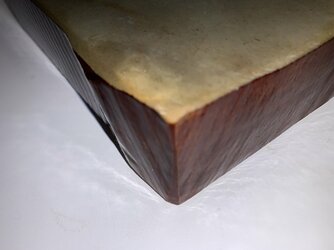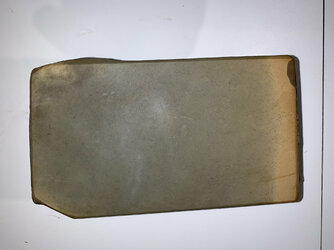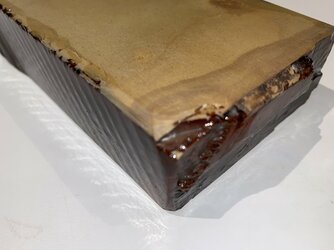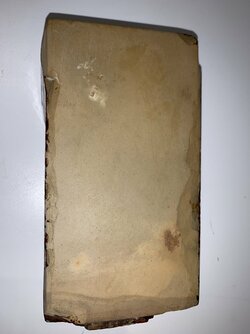Probably a dumb question but anyway, my Jnat (I only have one) bottom looks like it could be turned into a honing surface. The bottom is more sandy colored than the top, which is 90% gray with blonde edges. It would require a significant amount of material removal, something between 1/8th inch and 3/16 inch. Not having a clue about how this is normally done, I would go about it with a diamond cup wheel, getting as close to flat as possible and then finishing flattening it with diamond honing plate(s).
Is there a reason(s) why this cannot or should not be done? Is there an accepted way of removing significant stock from a stone rather than using hand held power tools and 'being careful'? As long as I keep the stone from getting hot and isolate it with materials that will not cause any shock to the stone while grinding it (soft materials as opposed to sitting it on a concrete block for example), is there any downside to trying this? I have a background as a toolmaker so I do realize the precision required for the rough grinding... my plan would be to treat the diamond grinding in a similar way to scraping iron which is taking down the high spots until the remaining surface is flat w/in a reasonable range of say, 1/32" or less and then using a diamond plate such as an Atoma to do the final flattening. Unless of course there is an accepted method of doing this more directly.
My motivation here is that the bottom of the stone appears to be quite different than the top, the honing surface.... and it might provide a different Jnat to try out. ???
Is there a reason(s) why this cannot or should not be done? Is there an accepted way of removing significant stock from a stone rather than using hand held power tools and 'being careful'? As long as I keep the stone from getting hot and isolate it with materials that will not cause any shock to the stone while grinding it (soft materials as opposed to sitting it on a concrete block for example), is there any downside to trying this? I have a background as a toolmaker so I do realize the precision required for the rough grinding... my plan would be to treat the diamond grinding in a similar way to scraping iron which is taking down the high spots until the remaining surface is flat w/in a reasonable range of say, 1/32" or less and then using a diamond plate such as an Atoma to do the final flattening. Unless of course there is an accepted method of doing this more directly.
My motivation here is that the bottom of the stone appears to be quite different than the top, the honing surface.... and it might provide a different Jnat to try out. ???




